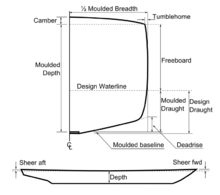Please tell us which country and city you'd like to see the weather in.
Kalić
Kalić is a village in Croatia. It is connected by the D8 highway.
Coordinates: 45°30′35″N 14°44′03″E / 45.5097536800°N 14.7340883100°E / 45.5097536800; 14.7340883100
Kali (poem)
"Kali" is a popular award winning poem by the eminent Indian writer, linguist and literary critic Rukmini Bhaya Nair. The poem won First Prize in the Second All India Poetry Competition conducted by The Poetry Society (India) in 1990. The poem has been widely cited and anthologised in reputed journals and scholalry volumes on contemporary Indian poetry.
Excerpts from the poem
Comments and criticism
The poem has received rave reviews since its first publication in 1990 in the anthology on Indian Poetry Emerging Voices. The poem has been frequently quoted in scholarly analysis of contemporary Indian English Poetry. The poem is regarded by critics as a jewel in contemporary Indian poetry.
Although outwardly the poem describes the Hindu Goddess Kali, her tantrums and her equation with her son Ganesha and consort Shiva, the poem has a clear existentialist message for the Indian woman and her many socio-psychological trappings. In her writings, Rukmini brings about this interplay between the esoteric and the mundane in systematic subjugation of Indian woman over the centuries. The poem has been widely discussed at various literary festivals.
Kali (painter)
Kali (Hanna Weynerowska, born Hanna Gordziałkowska; 18 December 1918 – 20 June 1998) was a Polish-born American painter known for her stylized portraits. She has been described as one of the most important Polish female painters. She was a World War II veteran of the Polish Resistance Movement after Nazi Germany occupied Poland, when she used the nom de guerre Kali. After emigrating and marrying, she used many variants of name, including "Hanna Kali Weynerowski", "Hanna Weynerowski-Kali", "Hanna Gordziałkowski-Weynerowski", "Hanka Weynerowska", and "Hanna Gordziałkowski", but she signed her paintings Kali.
Work
The figures in her art resemble Old Masters in subject and positioning, but are painted in a simplified, flattened and more graphic manner. The paintings are brightly colored, often portraying the subject shown sitting at bust-length, with an elongated face, flattened body, a patterned element such as part of the clothing, and with the subject's hands positioned in a classical pose. Her work has been likened to a combination of Neo-mannerist and Surrealist.
Sheer
Sheer may refer to:
See also

Sheer (ship)
The sheer is a measure of longitudinal main deck curvature, in naval architecture. The sheer forward is usually twice that of sheer aft. Increases in the rise of the sheer forward and aft builds volume into the hull, and in turn increases its buoyancy forward and aft, thereby keeping the ends from diving into an oncoming wave and slowing the ship. In the early days of sail, one discussed a hull's sheer in terms of how much "Hang" it had. Sutherland's 1711 Ship Builders Assistant covers this information in more detail.
The practice of building sheer into a ship dates back to the era of small sailing ships. These vessels were built with the decks curving upwards at the bow and stern in order to increase stability by preventing the ship from pitching up and down.
Sheer on exposed decks makes a ship more seaworthy by raising the deck at fore and aft ends further from the water and by reducing the volume of water coming on deck.
See also
References
Radio Stations - Kalić
SEARCH FOR RADIOS
Podcasts:

